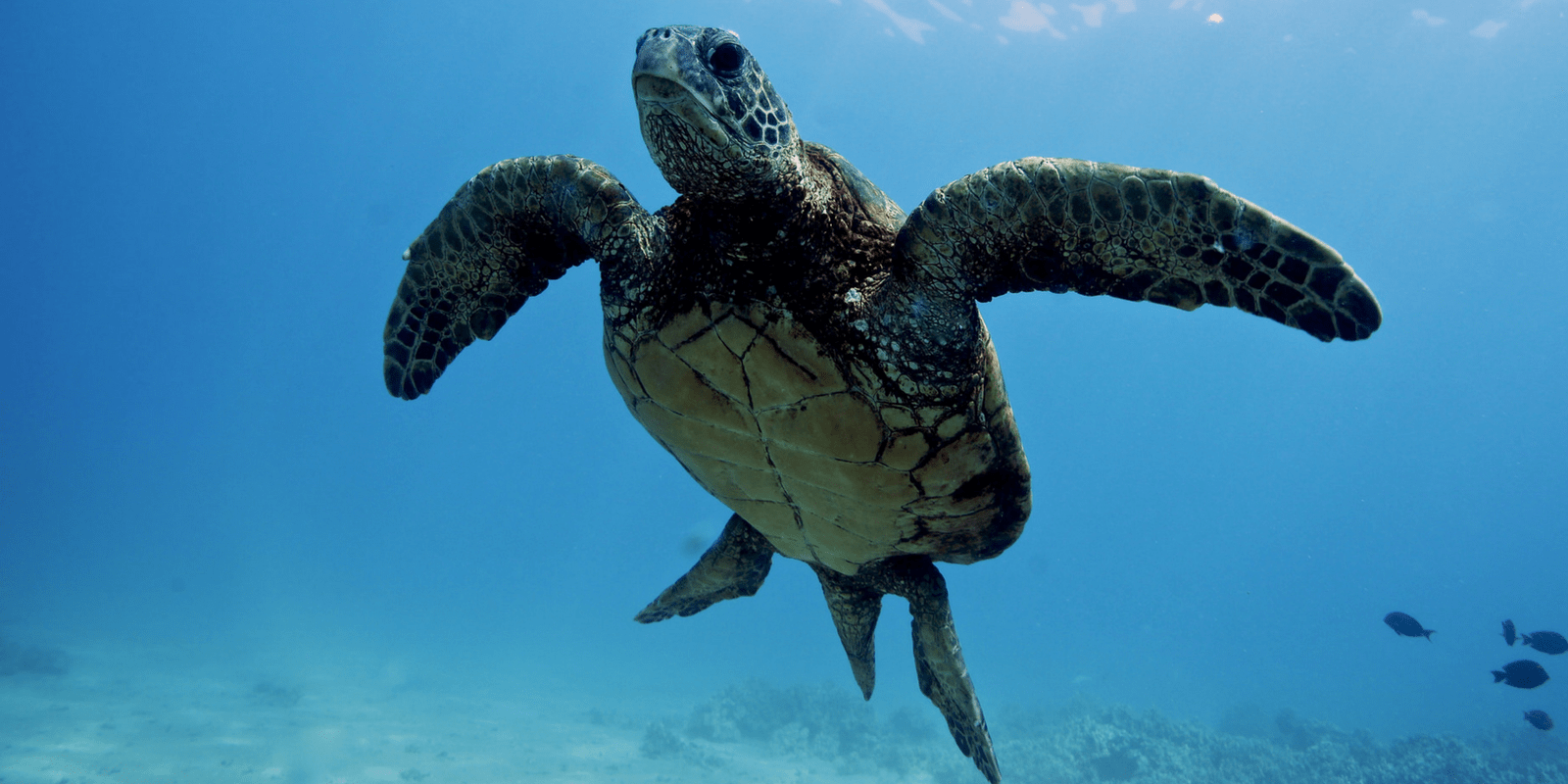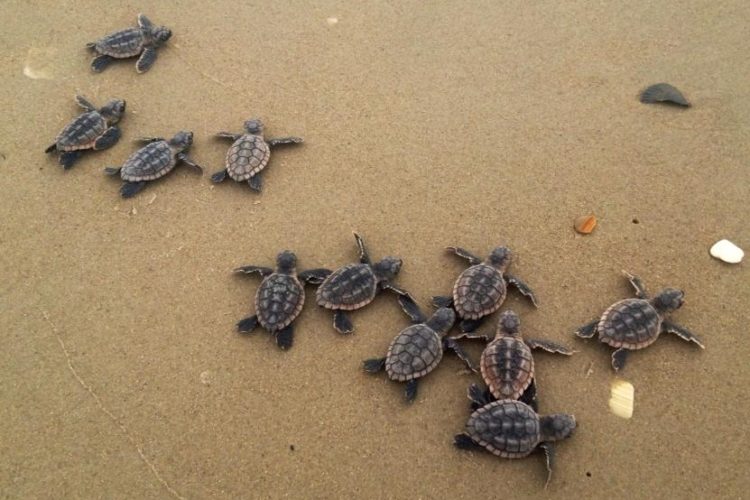We have much more to do and your continued support is needed now more than ever.
States Take the Lead on Climate

After the wave of elections in early November, it is clear that states are ready and willing to take the lead in protecting wildlife and people from the threat of climate change. In Virginia, hours after election results demonstrated a strong win for Governor-elect Ralph Northam and other candidates supporting climate action, state regulators released a major new proposal to reduce the state’s carbon pollution by 30 percent by 2030.
Virginia’s proposal would pave the way for the state to link with the Regional Greenhouse Gas Initiative (RGGI). RGGI is a cooperative effort among nine eastern states to reduce greenhouse gas emissions through a regional cap-and trade program that includes Connecticut, Delaware, Maine, Maryland, Massachusetts, New Hampshire, New York, Rhode Island and Vermont. RGGI has resulted in remarkable pollution reductions and a revenue source for states.
Likewise in New Jersey, a new governor was elected on a platform that promised to have the Garden State re-join RGGI. Governor-elect Phil Murphy pledged to meet reduction targets through a massive commitment to clean energy.
RGGI currently covers 1 out 6 Americans, and 20 percent of the U.S. gross domestic product (GDP). Along with California, which also has a carbon pricing system, New Jersey and Virginia’s participation in RGGI would result in just under 1 in 3 Americans living in state’s with ambitious carbon pricing policy designed to mitigate climate change.
Confronting a Growing Crisis for Wildlife in Virginia
Virginia’s plan confronts the growing threat of climate change head on. As a coastal state, the impacts of climate change are especially being felt in parts of Virginia like the Hampton Roads region, which is second only to New Orleans in terms of population size at risk from sea level rise. With three feet of sea level rise (well within the projected range), between 59,059 to 176,124 people could be impacted, and between 162 to 877 miles of roads could be inundated. Further, the gradual subsidence of coastal land in Virginia is magnifying the impacts of sea-level rise in the region. At Swells Point in Norfolk, water levels over the past 80 years have risen 14.5 inches– well above the global average.
Virginia’s Chesapeake Bay is already feeling the impacts of rising sea levels and warmer water temperatures, which are also making the bay and its many tributaries susceptible to harmful algal blooms — a threat to both people and wildlife. These changes are altering the abundance and migration patterns of wildlife in the bay, leading to declines in waterfowl and commercially important shellfish. The shellfish aquaculture industry in the bay generates $45 million for Virginia annually and a changing climate threatens this critical production.

Virginia’s beaches and coastal waters also support five of the seven sea turtle species found worldwide. Every year between 5,000 and 10,000 sea turtles swim up the Chesapeake. These turtles are mostly the threatened loggerhead and endangered Kemp’s ridley, which depend on the bay for food and safety. The loggerhead sea turtle also depends on the bay’s sandy beaches and dunes for nesting habitat. As the sea level rises and extreme weather events occur more frequently, these nesting habitats are being washed away.
New Jersey Steps Back Into Climate Action
The election in New Jersey tells a similar story — climate action is a winning platform. Newly elected Governor Murphy campaigned on a goal of 100 percent clean energy by 2050. He plans to reach this goal by re-joining RGGI, aggressively building out solar, and deploying 3,500 megawatts of offshore wind by 2030.
This shift to clean energy is of critical importance in a state that is already seeing the impacts of climate change on its communities and wildlife. New Jersey has 127 miles of coastline bordering the Atlantic, and nearly 1,800 miles of estuarine shoreline bordering the Delaware Bay and its offshoots. Delaware Bay has the largest population of horseshoe crabs in the country. But these prehistoric-looking critters are experiencing more frequent and severe Atlantic storms — a result of climate change. These storms are eroding the beaches that the crabs need to lay their eggs. Migrating shorebirds like the red knot and semipalmated sandpiper depend on horseshoe crab eggs as a food source during their long migrations. Furthermore, climate change is altering when the crabs lay their eggs, increasing the risk that migrating birds will miss their window of opportunity and go hungry.

The same beaches and coastal marshes that provide habitat to shorebirds and horseshoe crabs also create a protective buffer for coastal communities that have been increasingly suffering the impacts of flooding and sea level rise. Like Virginia, New Jersey has the potential to be a national leader in climate resilience and carbon reductions.
Forward in the States, Backward in the White House
The moves towards climate action in the Virginia and New Jersey elections are in stark contrast to the backpedaling underway in the Trump administration. After a summer and fall of unprecedented storms and megafires, the administration has doubled down on relentlessly rolling back climate safeguards like the Clean Power Plan — the first ever federal measure to limit carbon pollution from power plants — and is planning to withdraw the U.S. from the international Paris Agreement. As a result, the U.S. will be the only country in the world not participating in this global climate effort to keep emissions at safe levels.
With this backwards approach, states are stepping up and answering the demands of the American people. A 2017 poll shows that 68 percent of Americans want the U.S. to lead global efforts to slow climate change, and candidates are running campaigns that reflect this growing demand.

State, city, and business leaders have shown continued climate leadership. This month, the UN’s international climate conference in Bonn, Germany was packed with the largest unofficial #WeAreStillIn U.S. delegation to ever attend, in spite of the U.S. having no official pavilion. The attendees included leaders from 14 U.S. states that cover half of U.S. emissions and massive corporations like Walmart and Citi.
Wildlife can’t wait for climate action. The recent events in Virginia, New Jersey, and Germany give hope that states and other non-federal actors will continue to lead on climate action. But, state action alone is not enough. To achieve the pace and scale of carbon reductions needed to avoid catastrophic warming requires federal action. Right now, leadership in Washington needs to come from members of Congress on both sides of the aisle.
Please tell your congressmen and women that it is time to push for economy-wide carbon reductions across the U.S.!





















